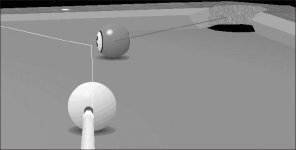What do you do differently to make each of the three shots in the experiment?
Thanks,
Dave
Thanks,
Dave
I played with the CTE SYSTEM both Saturday, and Yesterday I would give the a thumbs up,:thumbup2: as I saw first hand CTE works.
I was lucky enough to know an “A” Player who I ran into whom I asked a question or two about CTE, after his simple explanation I gave CTE a try the next day.
I found the “system” does work, but several times I went to make shot with CTE and said to my self these shot “will not go” :scratchhead: but they did go, :bow-down: so lets say I will spend more time on CTE, and call upon it when I have a shot where CTE can be used. What I am using is not the solution to the shot before me.
I see CTE as another “tool” on my tool belt to be used when needed.


